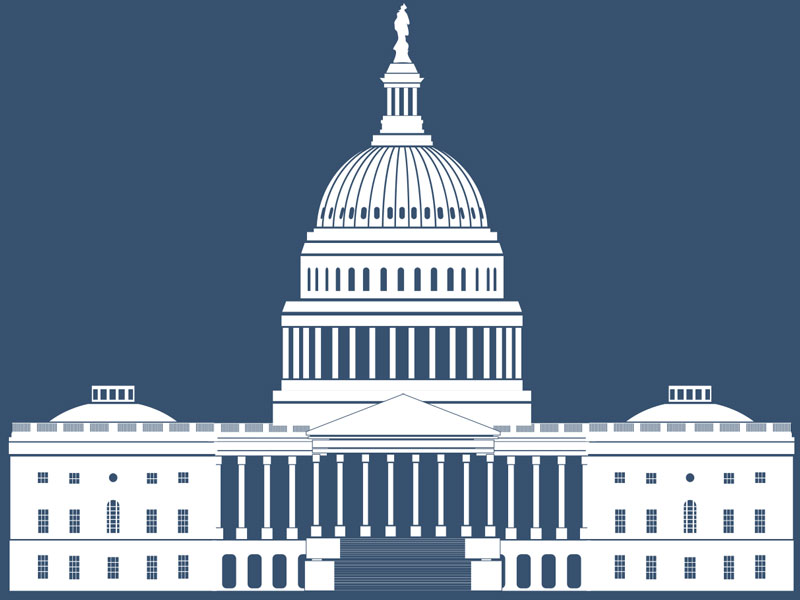Female politicians make strides in Congress
Gender politics have defined the 2018 midterm elections, prompting a surge in female political engagement for candidates and voters. For the House of Representatives alone, 436 women filed for candidacy and 239 women are currently competing in general elections—many of them leading in the polls—foreshadowing a significant upheaval of the current gender balance in the House. In comparison, in 2016, only 272 women filed for candidacy in the House, 167 competed in general elections, and 84 women were elected (Rutgers University).
The dramatic increase in women taking electoral risks has led many pundits to label 2018 the “Year of the Woman,” yet crucial questions remain about what injustices encouraged women to run and what women must do to win.
With a recurring stream of headlines bringing allegations of blatant sexual assault and harassment against male politicians to light, it appears many women have become frustrated with the workplace environment perpetuated by an overwhelmingly male Congress.
The #MeToo movement has revealed just how deeply sexual misconduct permeates the highest levels of government. From progressive Democrats like Senator Al Franken of Minnesota to stalwart Republicans like Representative Blake Farenthold of Texas, male politicians across the political spectrum have been accused of sexual harassment and publicly shamed out of Congress. For many Americans, the need for more women in Congress has never been more apparent.
Preceding 2017’s series of congressional sexual misconduct scandals, President Trump’s adverse conduct towards women, including recorded evidence of blatantly misogynist behavior in a leaked Access Hollywood tape, sparked a wave of female activism opposing his election. The day after Trump’s inauguration, 4.2 million people in cities across the country participated in the first Women’s March (Vox), a demonstration intended to rebuke Trump’s behavior towards women and embrace social and legal equality for women.
Beyond a broadening social desire to shatter the glass ceiling and dismantle gender barriers in government, controversial abortion policy issues have also inspired more women to run. In 2017 alone, states passed 63 laws curtailing reproductive health rights (Guttmacher Institute). Many female candidates have fueled their campaigns with promises to pro-choice female voters to weigh their interests in reproductive health more than male politicians, particularly Republicans.
Though the electoral climate may favor women more than past election cycles, many female candidates still must carefully tailor their public image in order to appeal to voters. Women oftentimes have to overcome pervasive gender stereotypes that paint them as emotional and temperamental, limiting their rhetoric more than their male counterparts.
“Female politicians often have to hide their passion in order to be more ‘masculine’ because that’s what voters are used to,” junior Alyssa Knudsen said. “They’re used to someone who is very logical and straightforward and less emotional. I think it’s important that women keep their emotions in check during debates so that people won’t think the wrong things based on unfair stereotypes.”
Not only are more women running for government positions, but women also appear more driven to vote in upcoming elections than ever before, with an increasing majority voting Democratic.
Polls done by NPR show that women have recently swung more Democratic while men stay nearly split or leaning slightly Republican. In a poll conducted by POLITICO, among Democratic female voters, 71% said they were “very motivated” to go out and vote, making them the most motivated demographic in this year’s elections. For Republican women, 69% said they were “very motivated” to vote, making them the second most motivated demographic (POLITICO).
Due to the increasing amount of Democratic female voters, 2018’s partisan gender gap could surpass even 2016’s drastic gender gap of 22 points. According to NPR polls of likely 2018 voters, women favor Democrats by an overwhelming 21 points and men favor Republicans by 3 points, making the partisan gender divide a total of 24 points.
Many of the factors that emboldened more women to run for office can also explain the increased motivation among female voters.
“The #MeToo movement plays a part here,” Peace and Justice teacher Ms. Steiert said. “I think that it spurred women to speak up for themselves, to defend themselves.”
Along with female empowerment movements and the #MeToo movement that can attribute to the increase in female voters, many believe gender controversies plaguing the Trump presidency play a role in more women voting. Most recently, Brett Kavanaugh’s confirmation to the Supreme Court in spite of sexual assault claims against him left many women outraged towards the outcome, promising to make the 2018 midterms a referendum on how sexual assault allegations affect men in power.
As for the partisan gender divide, broad female opposition to anti-abortion laws and legal threats to reproductive rights could have a significant part in why women are leaning away from putting Republicans in office.
“The [Republican] hope to overturn Roe v. Wade has gotten [many women] to vote in opposition,” Ms. Steiert said.

Shawna Muckle, 17, is a senior at Jesuit High School. She has been a member of the Chronicle staff for three years in various capacities, and she is currently one of its chief editors. Shawna is fascinated by politics and government, and she enjoys writing articles for the Chronicle pertaining to local and national political developments, alongside issues tied to social justice and personal identity. Some of her favorite pieces she’s written include a feature on Jesuit students’ experience with microaggressions, a recap of the 2018 midterm elections, and an article discussing last year’s clerical abuse scandal within the Catholic Church. Outside of journalism, Shawna is the leader of Jesuit’s Model United Nations club and a member of her school’s Ethics Bowl team, which was a 2019 national champion. Shawna is also a Precinct Committee Person for the Washington County Democrats. In her free time, Shawna can be found aggressively running up hills, drinking boba, and yeeting off on road trips to Seattle (for unspecified reasons). Ask her about her opinions on Congress, specifically a) Republicans and b) the crisis with the federal deficit. In the future, Shawna hopes to pursue journalism in college and, later on, as a congressional reporter in DC.



